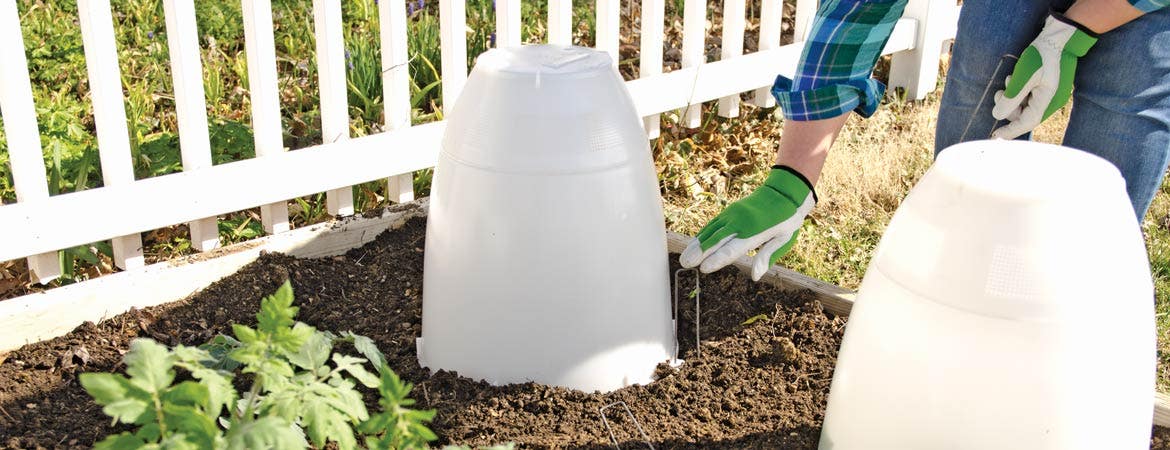Protect Your Plants from Early Spring Frost


We've certainly had some unusual weather so far this year! Here in Ohio there have been multiple days of 60+ degree weather in February, along with dustings of snow and below freezing temperatures in March. You never know what to expect! Those warmer days make us want to get out in the garden sooner, but there's always that risk of the next frost. No worries! We have some helpful ways to protect your plants.
Greenhouses
Cool weather crops aren't as susceptible to frost and can be planted a couple months before the last frost date. While they can tolerate a light frost, you still want to have frost protection on hand for those really chilly nights. In the image featured above, we were testing a new pop-up greenhouse and found it was ideal for protecting spinach and cold weather crops from frost and garden pests.
"I was looking for a way to start my garden earlier and came across this greenhouse. It fit perfectly over my 4' x 4' raised bed. It was easy to set up and secure down. The best part is I was able to start my garden 6 weeks earlier than normal and the results have been fabulous, just take a look. I can't wait to see how long I can grow cool weather crops into the winter." — Beth Marshall, Gardener's Edge Brand Manager
Cold Frames
Cold frames work in a similar way to greenhouses but in a smaller space. They use solar energy and insulation to provide the ideal microclimate for your plants. They're wonderful for growing crisp salad greens in late fall and winter, as well as early spring. You can use them to start seeds, harden off your seedlings, extend your growing season by protecting plants from frost, and also to overwinter plants.
Individual Plant Covers
Individual plant covers such as Frost Guards or Plant Protectors are a quick and easy way to cover tender plants. These are perfect for getting an early start and extending your growing season. You might also use them to protect some of your prized bulbs that start blooming a little early and need protection on frosty nights. (Great for protecting rose plants through the winter, too!)
The great thing about these covers is that you can place them and leave them until the last frost has passed. There's no need to remove the covers each morning since they have ventilation for warmer days and are translucent to let sunlight through. Just place overtop of the plants and secure with anchor pins.
Some people also use buckets, plastic pots or coffee cans in a similar fashion. These work well when you're in a bind and need something fast that you might already have around the house. Just remember to remove these every morning as they do not have ventilation like the Frost Guards, and you don't want to deprive your plants of oxygen and sunlight.
Floating Row Covers and Tunnels
When you need to quickly cover your raised bed or garden rows, floating row covers and poly or fleece tunnel covers work great. These create warmth and insulation while allowing sunlight (and water, depending on the material) to filter through to the plants. They form a barrier against frost and harsh weather, as well as animals and insect pests.
You can also use burlap or old sheets as insulation against a freeze. These materials are a little heavier so you might need to use tomato cages, coffee cans or another type of support to keep the cover from directly lying on your plants. You can also place a bucket of hot water beneath the cover near your plants to help maintain heat and keep plants warm. Secure with anchor pins, bricks or heavier rocks. Remember to remove the cover in the morning.
A Few More Frost Protection Tips
Moist soil helps keep in heat and insulates the roots of your plants, so be sure to water plants the day before a freeze if your soil is dry.
Don't forget about your potted plants! Since potted plants' roots are above ground, they are more susceptible to frost damage. You should either bring these plants indoors or wrap the potted plant in burlap.
Published March 2017
